Eunuchs of the Sultan's court: a brilliant career in exchange for male happiness
Categories: History
By Pictolic https://pictolic.com/article/eunuchs-of-the-sultans-court-a-brilliant-career-in-exchange-for-male-happiness.htmlIn the Middle Ages, in the countries of the East, a slave, having demonstrated wisdom and loyalty to the ruler, could become one of the most powerful people in the country. But with one caveat-he had to part with his manhood by becoming a eunuch. The history of the Ottoman Empire knows many cases when a court castrate received a high position and received the right to decide the fate and give advice to the Ruler of the world himself-the Sultan.
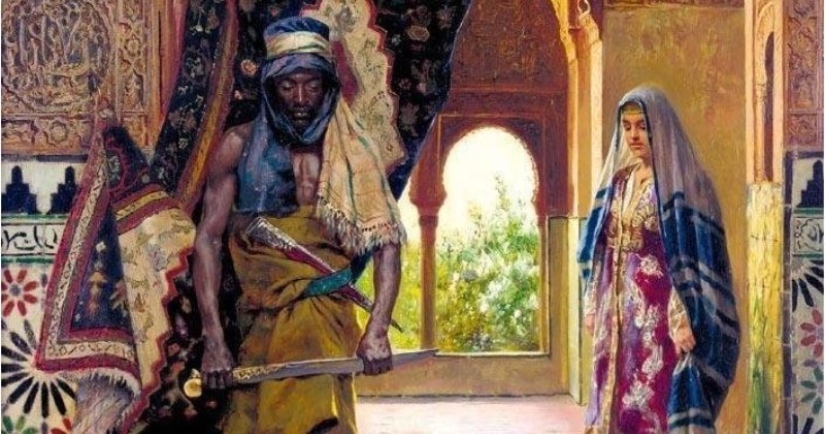
Alexandra Shutko, author of the books "Roksolana: Myths and Realities", "Letters of Roksolana: Love and Diplomacy" and the novel "Hatice Turhan", told the story of the Ottoman eunuchs, from the very birth of this special caste to the fall of the great sultan empire.
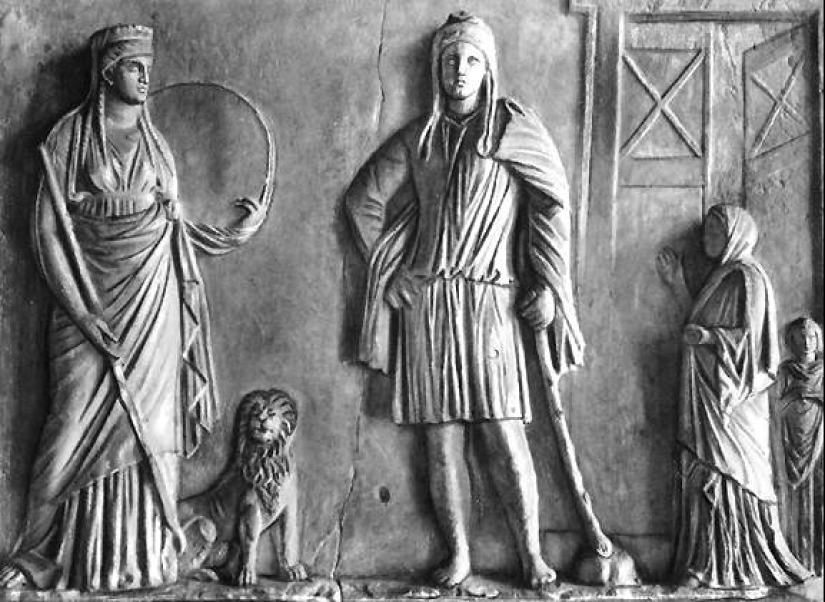
The mother of the gods Cybele (left). She was depicted accompanied by lions
It is difficult to say when the rulers first came up with the idea of castrating their subjects, but Assyrian sources claim that 4 thousand years ago, the rulers ordered to castrate state officials so that they would not think about seizing power and creating their own dynasty.
Later in Assyria, they began to remove men's genitals for ritual purposes. The priests of the goddess of fertility Ku-Baba sacrificed their masculinity at the altar so that the deity would give people a plentiful harvest and protect the crops from drought and locusts.
Scientists suggest that over time, the worship of Ku-Baba turned into the worship of the Mother of the Gods, Cybele. The functions and even the names of these ladies are too similar to be a mere coincidence. After the war with Carthage, the cult of Cybele migrated to Rome and became very popular there.
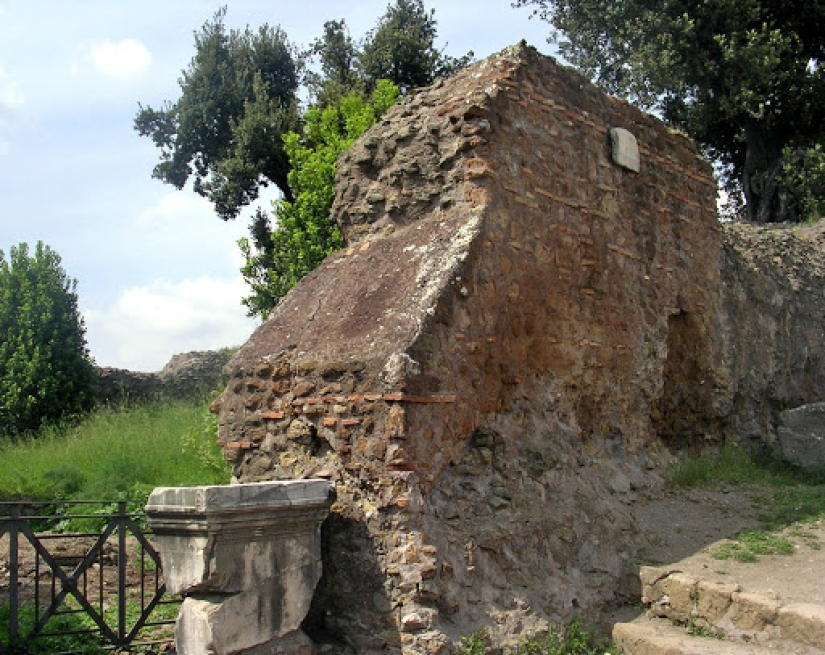
Ruins of the Temple of Cybele on the Palatine Hill, Rome
The priests of the Mother of the Gods were castrates, so only foreigners served in the temples of Cybele – the Romans had a cult of male power and the castration of citizens and even slaves was strictly prohibited. After the fall of Rome under the onslaught of the barbarians, Constantinople became the new capital of the empire. In the new Roman state, castrates were treated very favorably – the Scopians ceased to be only priests and they began to be appointed to official positions at the court of the emperor.
In 1453, the Ottomans captured Byzantium and Constantinople became the capital of their empire. The Sultan called himself the Lord of the World, which, given his possessions, was very close to the truth. The ruler of the Ottoman Empire received gifts and offerings from the governors of his possessions, and among other things, eunuchs from Egypt got into his palace.
There were several types of castration. At first, men were deprived only of their testicles and this was the case until the middle of the 15th century. But then one day Sultan Mehmed II noticed how the gelding was covering the mare, after which the ruler ordered to accept only castrates with removed testicles and penis into the harem.
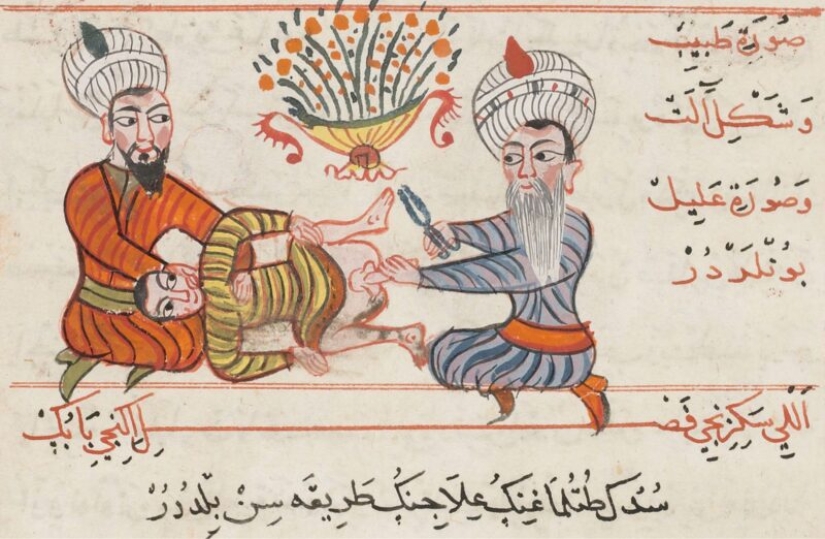
Castration. An illustration from the Persian handbook of surgery of the 15th century
Usually, the operation was performed for boys before the onset of puberty and for some reason they considered 8 years old to be the ideal age. The victim was tied to a special table, his genitals were tied with a cord and cut off with a razor-sharp blade. To stop the blood and avoid infection, the wound was filled with resin or cauterized with hot metal. A bamboo tube was inserted into the urethra to facilitate the administration of natural needs.
After that, the child was buried for several days up to the neck in hot sand, so that he could not touch the wound and interfere with its healing. The pain haunted the castrated man for several months, and the percentage of deaths from complications was very high. Children died during the operation from pain shock and due to blood loss, and some time after castration - from infections.
Those who survived grew up and at the same time gradually changed. Due to the lack of male hormones, eunuchs spoke in thin, sometimes squeaky voices, acquired feminine facial features and a special type of figure with wide hips and narrow shoulders. In addition, eunuchs suffered from urinary incontinence all their lives due to the fact that they had no penis.
Having survived the painful operation and the subsequent physical and moral suffering, the eunuchs received privileges that in ancient times could partially compensate for the damage from castration. They got access to the" social elevator " and, having intelligence and ambition, could quickly make a good career at court.
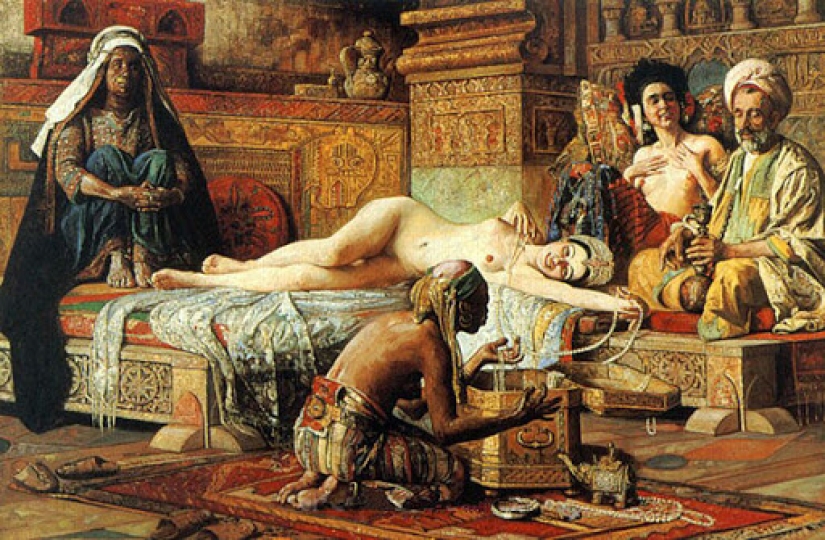
Most often, eunuchs began their service as a guard, and then were transferred to the category of servants or overseers. All this time they lived in cramped and overcrowded barracks-barracks, but often such conditions were much better than those from which they came to the court. Many of the eunuchs rose to the level of high officials and acquired their own luxurious residences.
There were also those who, having served the sultan for many years, faithfully received a pension and retired. Such castrati often got married and their position in society and wealth compensated for the lack of normal love joys for their spouses. The sexual life of the castrati was limited, but it existed! These people were credited with incredible virtuosity in oral caresses and the use of" adult " toys, which is why in the 17th century eunuchs were even forbidden to live together with women whom they took care of.
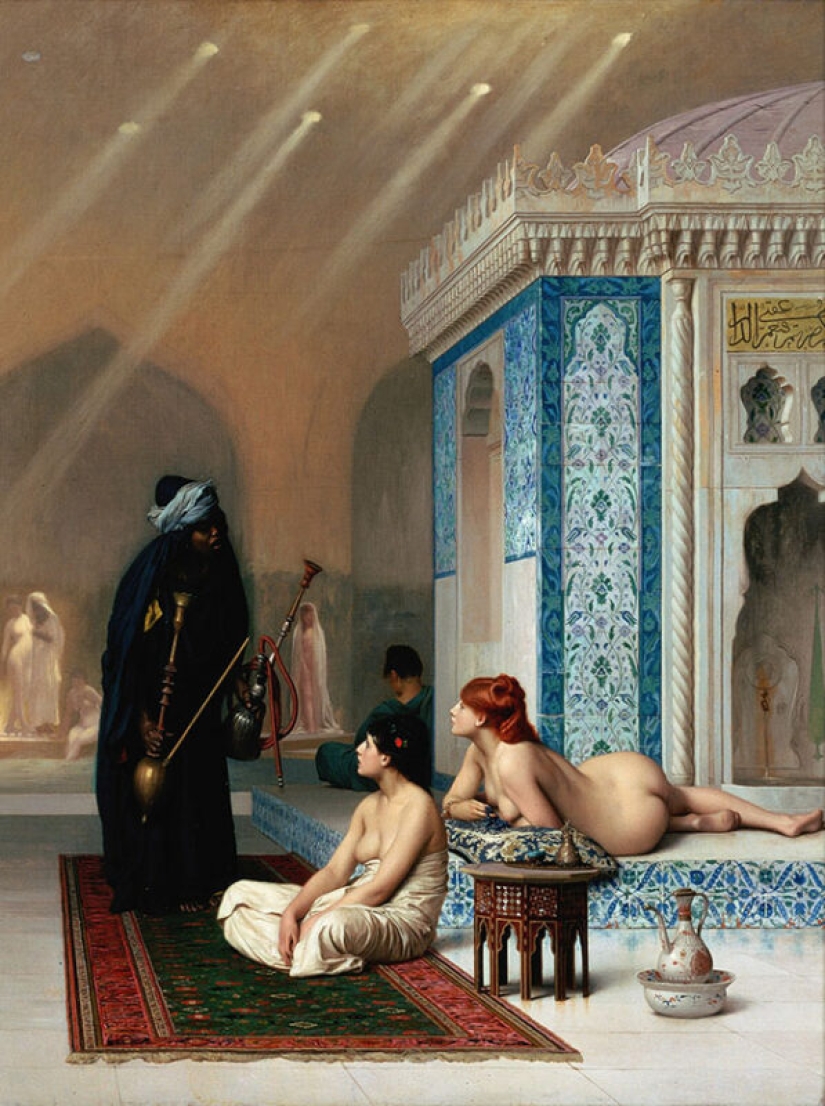
It must be said that some of the eunuchs who were castrated after puberty retained their masculine nature and continued to be attracted to women. One of these servants of the harem wrote in his memoirs the following:
It is worth mentioning such an important aspect as the attitude of religion to castration. The Prophet forbade Muslims to castrate people, so for many centuries the business of supplying eunuchs was a privilege of Christians. For the first hundred years of the Ottoman Empire, all the eunuchs at the sultan's court were exclusively white and ended up in Istanbul as spoils of war or a fine for non-payment of tax.
In the Balkans and the Caucasus conquered by the Ottomans, a jizya was levied from every house – a tax on non-believers. If a Christian family was unable to pay the required amount, the tax collectors could take the children from the family. Over time, the empire grew richer, the requirements for luxury grew and the demand for emasculated servants increased.
In the second half of the 15th century, the sultan's harem was served by 20 castrated servants and guards, and at the beginning of the 16th – twice as many. In the heyday of the Ottoman Empire, the number of eunuchs at the court reached 600-800 people!
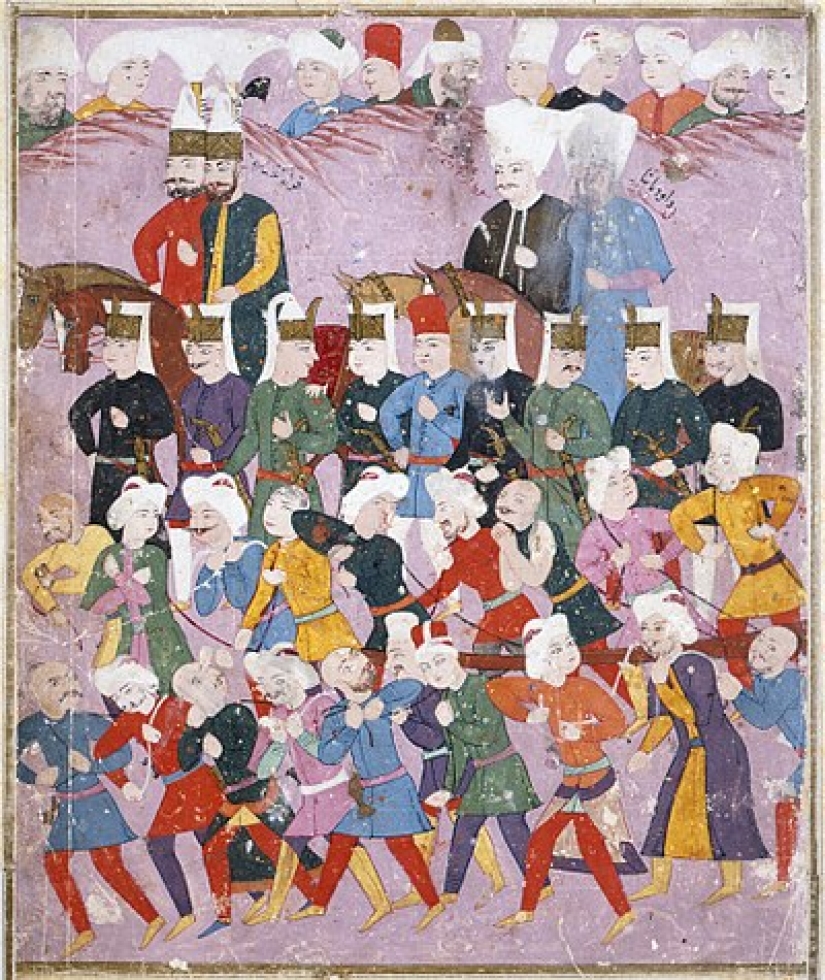
The Sultan and his court
Sultan Murad III, who ruled the empire in the 16th century, was the first to introduce the fashion for black eunuchs. Most often, slaves were captured or bought in Sudan, and then transported to the Orthodox Coptic monasteries of Egypt and Abyssinia. There, the monks castrated the unfortunate and then the" live goods " got to the slave market of Istanbul or directly to the customer.
An African, deprived of sexual organs, was a valuable commodity and was worth more than a beautiful white girl. Over time, black eunuchs became the majority at the sultan's court, and white people were forbidden to enter the premises where women were located. Also, African castrati served the sultan himself in his apartments and guarded his peace and life.
The head of the African castrates was called kizlyar-agha and, in fact, he was the chief manager over all the staff of the sultan's harem and palace. If we talk about the importance of this person, he was the fourth person in the empire after the sultan, the Grand Vizier and the Mufti.
The influence of kizlyar-aga at the court was based on connections with the harem and especially on cooperation with Valide, the sultan's mother. This woman was a powerful force and in the 16th and 17th centuries even determined the foreign policy course of the state. The so-called period of the Female Sultanate in the Ottoman Empire began with the Ukrainian Hurrem-Roksolana-the wife of Sultan Suleiman the Magnificent.
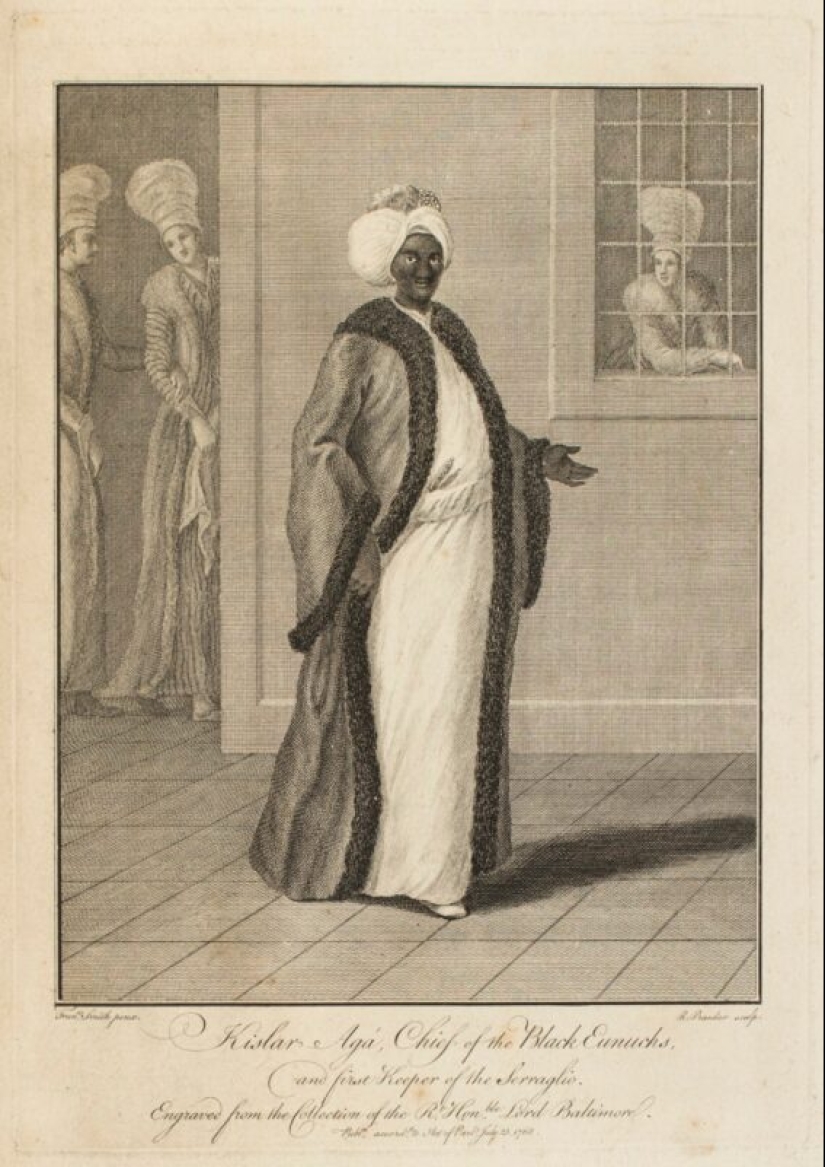
Kizlyar-aha. An engraving of the 19th century
Kizlyar-agha was the only person who had direct access to the harem, the valida and personally to the Sultan. He ensured the transfer of information between them and knew about everything that was happening at the court and in the state. Such a knowledgeable person was an important source of information, so foreign ambassadors preferred to be friends with kizlyar-aga and shower him with offerings.
The chief eunuch of the empire also managed the waqfs – property and land transferred by donors to mosques. These funds provided funding for the holy cities of Mecca and Medina. Kizlyar-ana also managed the waqfs of the Sultan's wives and many courtiers. It is known that after the death of the Greek wife of Akhmet I, Vasilika, the city of Athens belonging to her passed to the Vakuf and kizlyar-agha began to rule it.
Each month, the management of funds brought the chief eunuch up to 20 thousand kurush, which is about $ 1.5 million (109 million rubles) for modern money. Kizlyar-agha was the center of corruption of the Ottoman Empire – bribes, "laundered money" and numerous kickbacks passed through it.
But the Kizlyar-aga was not always from the Black Continent. History has preserved for us the name of Gazanfer – a white eunuch born in Venice. As a child, he and his parents were captured by Algerian pirates. His mother and sister were redeemed, and Gazanfer and his brother Jafer got to the slave market in Istanbul.
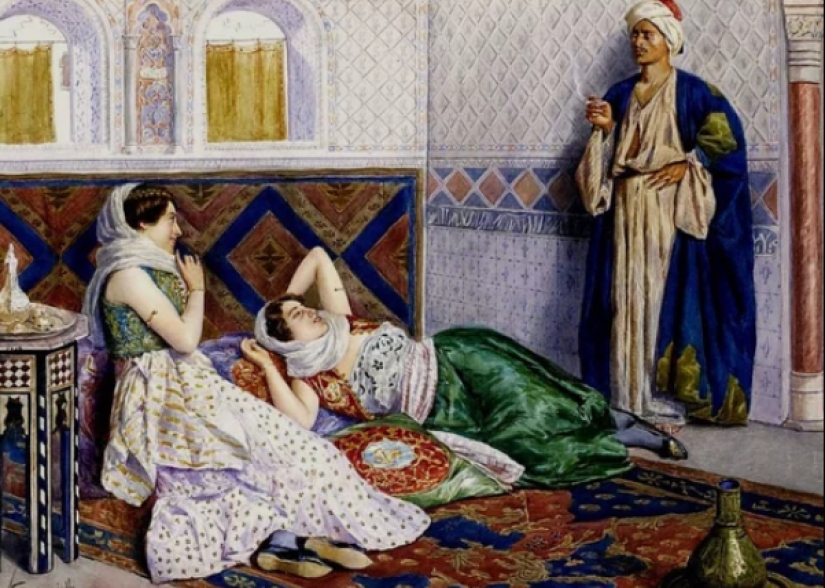
There, the boys were bought for service in the palace, after which they were assigned to study at the palace school. At the court, the children made friends with Selim, the son of Suleiman the Magnificent and Roksolana. But even the heir could not help the guys to make a career, since the path to power and wealth for foreigners lay only through castration.
Therefore, already as adult men, the brothers decided on castration. After becoming a eunuch, Gazanfer became a servant of Nurban – the future wife of Sultan Selim. Nurbanu and Gazanfer were fellow countrymen – the girl's father ruled the Greek island of Paros, which was under the rule of Venice.
When Selim became sultan, Gazanfer was appointed kapy-agasy, the senior white eunuch, and his brother Jafer learned the position of khaz-odabashi, the administrator of the sultan's residence. But Selim was not destined to rule the empire for a long time – he had an unhealthy addiction to alcohol and soon died. Murad, the son of Nurbanu, took the throne.
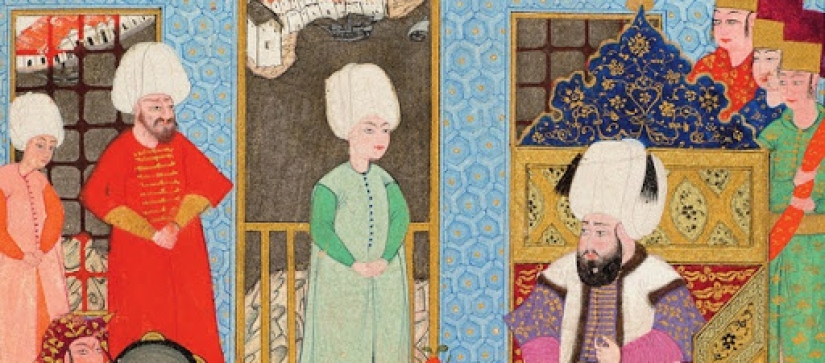
After becoming a valide, the woman concentrated power in her hands, skillfully scheming against the Grand Vizier and maintaining contacts with many European monarchs through correspondence. Nurbanu contributed to the appointment of Gazanfer to the post of khaz-odabashi after Jafer decided to retire.
The Venetian eunuch received enormous power at the court, managing the palace and an army of eunuchs. For the first time, one person had such opportunities and he managed to take advantage of them. Thanks to his prudence, Gazanfer became an adviser to Sultan Murad III, and after his death, Mehmed III.
The eunuch became one of the richest people in Istanbul, moved his mother and sister to him, and even persuaded the latter to convert to Islam. Gazanfer enjoyed power and prosperity, but everything is fleeting at the sultan's court and soon trouble came. Due to the reduction of wages in 1603, the janissaries rebelled and one of their demands was the death of Gazanfer.
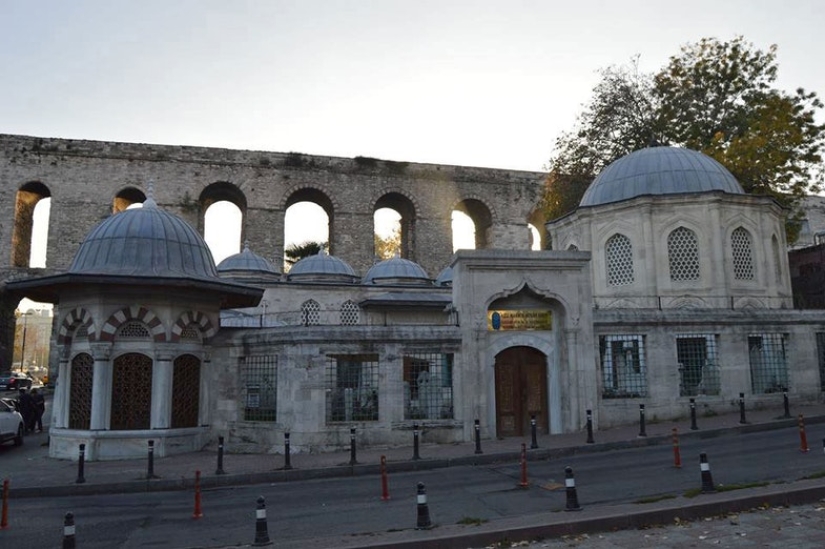
Gazanfer Tomb in Istanbul
The sultan went to meet the petitioners and executed his faithful servant and adviser to calm the unrest. The influential eunuch was buried in a luxurious tomb, and with the money bequeathed to him, a spiritual school was built near the burial. After the death of Gazanfer, Mehmed III also passed away, struck by a serious illness. Power passed to his son Ahmed, who elevated another Bosnian eunuch, Haji Mustafa.
Mustafa was white, but after castration he lived and studied for a long time in Yemen and Egypt. The black eunuchs considered him their own, which allowed the European to become the first kizlyar-aga in history. Having become a great man, Haji Mustafa became famous as a patron of poets, architects, scientists and, in general, people with progressive views. He helped Ahmed I to realize his dream – to build a majestic Blue Mosque, which became one of the symbols of Istanbul.
In 1617, Ahmed I died suddenly from typhus that raged in the capital. Haji Mustafa, using his influence and intrigues, helped for the first time in the history of the Ottoman state to transfer power not to the sultan's son, but to his brother. But Mustafa I suffered from a mental illness and a few months later an influential eunuch convinced the muftis to recognize him as incapacitated.
After that, the 13-year-old Osman II was elevated to the throne. Thus, the eunuch promoted the change of power, guided by state interests and not forgetting about his own.
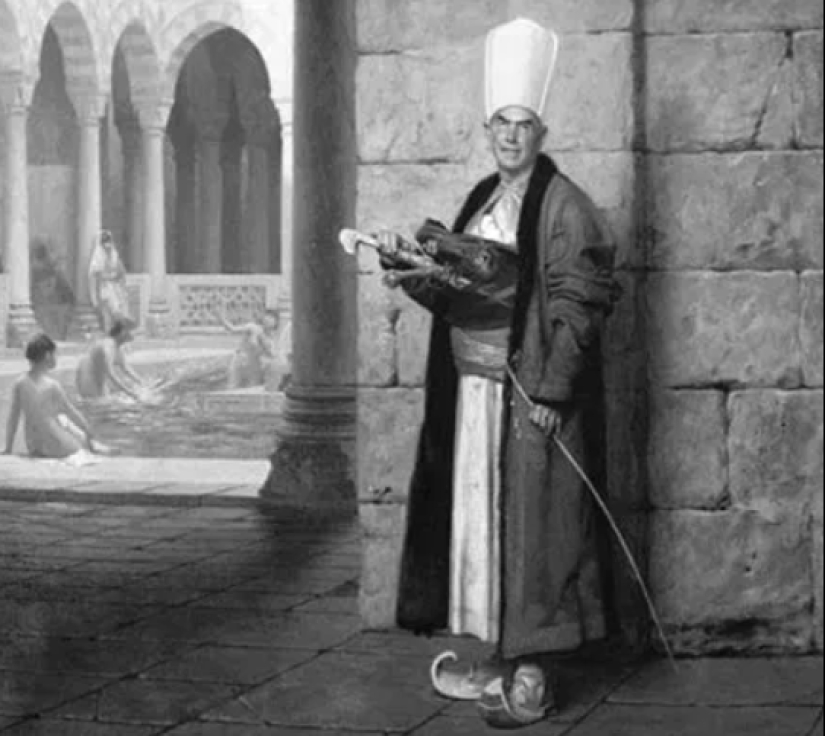
The decline of the eunuch era came at the beginning of the 19th century, along with the fashion for everything European. Sultan Mahmud II organized a special ministry governing the waqfs and the eunuchs lost their financial independence and the lion's share of power. From now on, kizlyar-aga managed only the territory of the palace and the path to politics for people with this position was closed.
In 1871, the slave trade was banned in the Ottoman Empire and there were no eunuchs. By their own will, no one wanted to become a castrate – a new era had come, in which affairs were handled not by money and connections of the harem, but by clever politicians and skillful diplomats.
There were castrates in Russia, but unlike in the East, our men castrated themselves exclusively for religious purposes, falling under the influence of the sect of the eunuchs. Interestingly, their influence in society was also very great.
Keywords: History | Military | Egypt | East | Castration | Empire | Officials | Sultan | Harem | Longrides
Post News ArticleRecent articles

Women always knew that beauty requires sacrifice, and were ready to go. In the best case, these victims were tired from walking at ...

Talented actress and beautiful woman, Sharon stone looked flawless always. But photographs taken in the early 1980-ies in ...
Related articles

Women always knew that beauty requires sacrifice, and were ready to go. In the best case, these victims were tired from walking at ...

He was the last of his tribe, all of whose members were killed by Belgian soldiers. Despite the fact that slavery in the United ...

Amazing and dramatic photos that will make you experience a variety of emotions. Even if you have seen some of these pictures, they ...

Do you know people who have retained a childish mischief and enthusiasm in their souls? Yes, those who, despite a solid suit, a ...